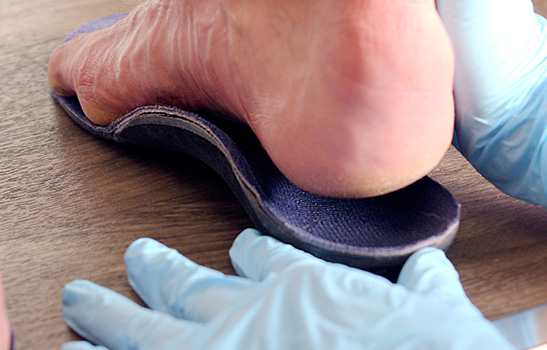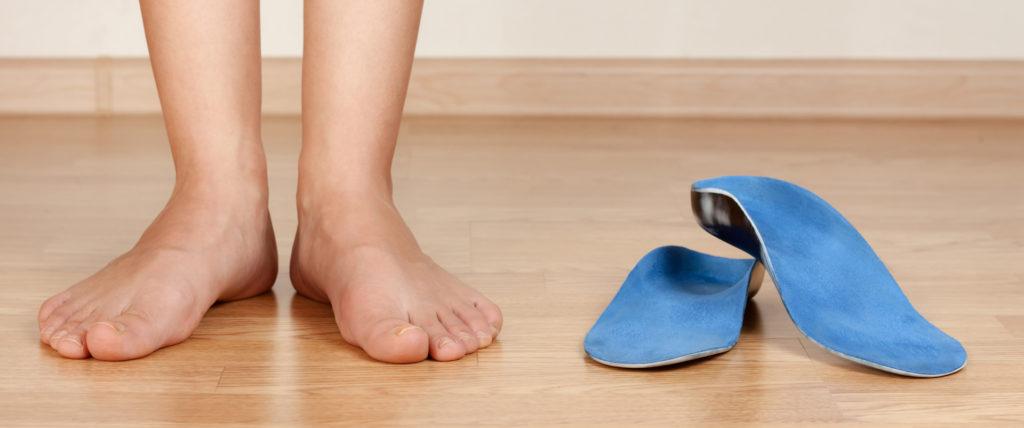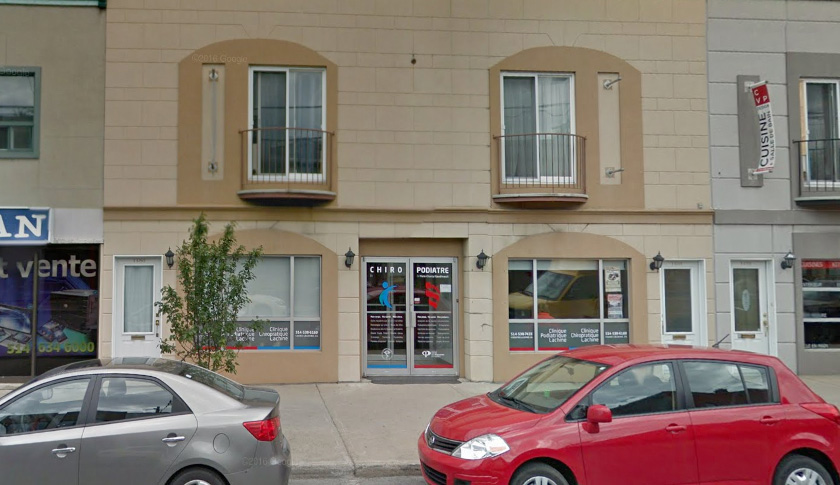Hammertoe
A hammertoe is a condition that causes the toe to bend, contract, twist or turn. Pain may be present or absent. The majority of the time, hammertoe is a sign of muscular imbalance resulting from poor foot function.
See the causes See the long term complications See how to relieve yourself at home
Signs and symptoms of a hammertoe
One or more of the following symptoms may be present:
- Contracted or crooked toe (toe remains bent, rotates or pushes into/tucks under/overlaps a neighbouring toe)
- Redness on the top or at the end of the toe
- Corns or calluses on the toe
- Footwear wears down and/or irritates the toe
- Thickening or discolouration of the toenail
- Spasm or cramping sensation at the toe
- Loss of mobility in the toe (difficulty moving it)
- Balance problems
What are the causes of a hammertoe
Most cases of hammertoes are the result of poor foot mechanics and abnormal gait.
The most common cause is over-contraction of the toes during walking as an attempt to compensate for unstable feet.
This phenomenon, referred to as flexor stabilization, is often associated with :
- Fallen arches
- Flat feet
- Genu valgum (“knock knees”)
- Joint hypermobility
- Poor balance
Another common cause is poor ankle mobility, which forces the extensor tendons on the top of the foot to work harder than normal. The extensor tendons become very noticeable and resemble taut guitar strings.
This phenomenon, called extensor substitution, is often associated with:
- High arches
- Rigid arches
- Genu varum (“bow-leggedness”)
- Pseudoequinus (front of the foot lower than the heel)
Hammertoe can also be a consequence of dysfunction in the big toe when its movement is limited or blocked. In such cases, the other toes attempt to compensate and risk becoming hammered due to overuse.
This type of hammertoe often occurs with the following conditions:
- Osteoarthritis
- Bunions (hallux valgus)
- Hallux limitus (functional or structural)
- Hallux rigidus
Hammertoes can be a symptom of broader (systemic) illness. A number of inflammatory diseases can attack the toe joints, causing them to deform.
These include:
- Rheumatoid arthritis
- Psoriatic arthritis
- Scleroderma
- Gout
In addition, some conditions that affect the nerves in the extremities can lead to a loss of function in the smaller muscles of the foot. The weakening of these muscles, which toes rely on to function properly, can cause the toes to contract.
Such conditions include:
- Diabetes
- Charcot-Marie-Tooth disease
- Cerebral palsy
- Poliomyelitis
- Multiple sclerosis
Inadequate footwear (high heels or shoes that are too tight, too small or too large) are an aggravating factor for hammertoes.
Injury (toe or metatarsal fracture, sprain or injury of a ligament or tendon surrounding the toe) can cause or accelerate the development of hammertoes.
Progression and consequences of a hammertoe
Initially, the affected toe is flexible: it remains possible to extend it. But with time, the contracture of the tendons intensifies, causing the contracted toe to become rigid and immobile. The more flexibility is lost, the more problems tend to arise:
- It becomes more and more difficult to be comfortable in shoes, and footwear can wear down.
- The toes get irritated inside shoes, forming corns and calluses.
- Among higher-risk populations, this irritation can cause pressure injuries.
Hammertoes also exert a retrograde force, increasing the amount of pressure that has to be sustained by the metatarsal bones at the base of the toes. These bones support our weight as they make contact with the ground. The extra pressure can cause inflammation in neighbouring joints and ligaments, making walking very painful. If this stress continues to be applied over a long period, these structures tire out and can tear, leading to the dislocation of the toe.
When to is hammered, it’s function is altered. In turn, the other toes attempt to compensate, potentially forming other hammertoes. Certain structures of the foot like ligaments and muscles may also attempt to compensate, causing fatigue and pain in the arch of the foot.
How to relieve a hammertoe pain at home
First of all, it’s important to wear adequate footwear in order to reduce the consequences of hammertoes and prevent them from worsening. Shoes should be wide enough at the top to comfortably fit your foot. The stitching on the upper part of the shoe should not rub against the affected toes, as toes with this condition fail to stretch out and can become irritated in this way. Shoes can also be altered by shoemakers to fit your feet and allow more space for your toes. Finally, avoid wearing high heel shoes as they increase pressure at the ball of the foot and are an aggravating factor in the formation of hammertoes.
Pharmacy-bought splints can help reduce hammertoe-related irritations and/or corns and calluses at the affected site. Gel tubes, toe spreaders/separators, cushions, gel insoles and other solutions may be used.
Mobility and strengthening exercises for the toes are recommended to decrease pain and reduce joint contracture.
Diagnostic of hammertoe
- A biomechanical exam must initially be conducted to identify the origin of the mechanical dysfunction causing the hammertoe condition. To establish an appropriate treatment plan, it’s important to understand the exact cause of the problem. This evaluation includes a comprehensive analysis of posture, foot function and plantar pressures.
- X-rays are used to identify if the toe is hammered, measure the degree of deviation and assess the condition of the toe’s joints. X-rays are also helpful in tracking the condition’s progress through time.
- Ultrasound is an excellent imaging technique used in evaluating the soft tissue around the hammertoe: the tendons, ligaments, joint capsule, plantar plate, nerves and synovial fluid. If the hammertoe condition causes pain, all these structures should be evaluated so the exact problem can be identified.
What can my podiatrist do about hammertoe?
1. Plantar orthotics :
Plantar orthotics optimize foot mechanics and distribute pressure more uniformly. They are used to directly address the cause of hammertoes and to reduce excessive pressure that can cause pain. They also help prevent the formation of hammertoes and the worsening of the condition over time.
2. Manipulative therapy and exercises :
Manipulative therapy is used to mobilize and relieve painful, contracted joints. It also helps stretch and relax the tense and sensitive muscles, tendons and ligaments surrounding the affected toes.
3. Foot care :
Thorough foot and toenail care. This treatment targets the accumulation of corns and calluses (dead skin) and thickened nails.
4. Cortisone injections :
Instead of administering an anti-inflammatory drug in pill form, cortisone (an anti-inflammatory medication) is injected directly into the swollen, painful area. In the case of hammertoes, cortisone may be injected into a swollen joint, around a tendon, into an adjacent bursa, etc.
5. Surgery :
Depending on the nature of the condition, surgery may involve making cuts in the bones to help straighten them, fusing together contracted joints, installing a metal rod or replacing the affected joint with an implant. It should be noted that even after surgery, orthotics should be worn to prevent recurrence.
How to prevent hammertoe?
- Wear appropriate footwear.
- If plantar orthotics have been prescribed, wearing them daily helps mitigate the mechanical problems that can cause or aggravate hammertoes.
- In cases of systemic illness potentially leading to contraction or deviation of the toes, wearing plantar orthotics can help prevent deformation.
- Consult with a specialist at the first signs and symptoms of hammertoes to prevent them from worsening or becoming rigid.
- People with diabetes should keep their blood sugar levels under control to reduce the risk of neurological complications in the feet and prevent deformation.
My toes will straighten out once I stop wearing high heels.

Unfortunately, once a hammertoe has formed, it is irreversible in the majority of cases. That's why prevention is the best way to ensure proper toe alignment.
And if it was not a hammertoe?
There are a number of other conditions that may appear similar to hammertoe:
- Synovial or mucous cyst
- Tendon tumor
- Inflammation of the plantar plate
- Capsulitis
- Bursitis
- Corns or calluses


